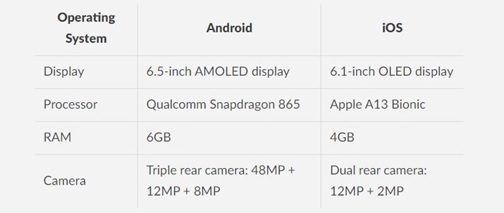
- Home
- Introduction
- Role of Prompts in AI Models
- What is Generative AI?
- NLP and ML Foundations
- Common NLP Tasks
- Optimizing Prompt-based Models
- Tuning and Optimization Techniques
- Pre-training and Transfer Learning
- Designing Effective Prompts
- Prompt Generation Strategies
- Monitoring Prompt Effectiveness
- Prompts for Specific Domains
- ACT LIKE Prompt
- INCLUDE Prompt
- COLUMN Prompt
- FIND Prompt
- TRANSLATE Prompt
- DEFINE Prompt
- CONVERT Prompt
- CALCULATE Prompt
- GENERATING IDEAS Prompt
- CREATE A LIST Prompt
- DETERMINE CAUSE Prompt
- ASSESS IMPACT Prompt
- RECOMMEND SOLUTIONS Prompt
- EXPLAIN CONCEPT Prompt
- OUTLINE STEPS Prompt
- DESCRIBE BENEFITS Prompt
- EXPLAIN DRAWBACKS PROMPT
- SHORTEN Prompt
- DESIGN SCRIPT Prompt
- CREATIVE SURVEY Prompt
- ANALYZE WORKFLOW Prompt
- DESIGN ONBOARDING PROCESS Prompt
- DEVELOP TRAINING PROGRAM Prompt
- DESIGN FEEDBACK PROCESS Prompt
- DEVELOP RETENTION STRATEGY Prompt
- ANALYZE SEO Prompt
- DEVELOP SALES STRATEGY Prompt
- CREATE PROJECT PLAN Prompt
- ANALYZE CUSTOMER BEHAVIOR Prompt
- CREATE CONTENT STRATEGY Prompt
- CREATE EMAIL CAMPAIGN Prompt
- ChatGPT in the Workplace
- Prompts for Programmers
- HR Based Prompts
- Finance Based Prompts
- Marketing Based Prompts
- Customer Care Based Prompts
- Chain of Thought Prompts
- Ask Before Answer Prompts
- Fill-In-The-Blank Prompts
- Perspective Prompts
- Constructive Critic Prompts
- Comparative Prompts
- Reverse Prompts
- Social Media Prompts
- Advanced Prompt Engineering
- Advanced Prompts
- New Ideas and Copy Generation
- Ethical Considerations
- Do's and Don'ts
- Useful Libraries and Frameworks
- Case Studies and Examples
- Emerging Trends
- Prompt Engineering Useful Resources
- Quick Guide
- Useful Resources
- Discussion
Prompt Engineering - COLUMN Prompt
The COLUMN prompt is a powerful technique that enables us to structure and format the responses generated by ChatGPT. By utilizing the COLUMN directive, we can create structured outputs, organize information in tabular form, and present the model's responses in a clear and organized manner.
Understanding the COLUMN Directive
The COLUMN directive allows us to define columns and format the content within those columns in the generated response. This is particularly useful when we want to present information in a table-like format or when we need to structure the output in a specific way.
The COLUMN directive works by specifying column headers and the corresponding content within each column.
The basic syntax for the COLUMN directive is as follows −
User: Can you compare the features of smartphones X and Y? ChatGPT: Sure! Here's a comparison of the features: ------------------------------------------------------ | **Features** | **Smartphone X** | **Smartphone Y** | |--------------|------------------|------------------| | Camera | 12 MP | 16 MP | | Battery | 3000 mAh | 4000 mAh | | Storage | 64 GB | 128 GB | ------------------------------------------------------
In this example, the user requests a comparison of smartphones X and Y. The response from ChatGPT includes the comparison table, created using the COLUMN directive. The table consists of column headers ("Features," "Smartphone X," "Smartphone Y") and the corresponding content within each column.
Best Practices for Using the COLUMN Directive
To make the most of the COLUMN directive, consider the following best practices −
Define Column Headers − Clearly define the headers for each column to provide context and facilitate understanding. Column headers act as labels for the information presented in each column.
Organize Content − Ensure that the content within each column aligns correctly. Maintain consistent formatting and alignment to enhance readability.
Limit Column Width − Consider the width of each column to prevent excessively wide tables. Narrower columns are easier to read, especially when the information is lengthy or there are many columns.
Use Markdown or ASCII Tables − The COLUMN directive can be combined with Markdown or ASCII table formatting to create visually appealing and well-structured tables. Markdown or ASCII table generators can be used to automatically format the table for us.
Example Application − Python Implementation
Let's explore a practical example of using the COLUMN directive with a Python script that interacts with ChatGPT.
In this example, we define a function generate_chat_response() that takes a prompt and uses the OpenAI API to generate a response using ChatGPT.
The chat_prompt variable contains the user's prompt and the ChatGPT response, including the comparison table formatted using the COLUMN directive.
import openai
# Set your API key here
openai.api_key = 'YOUR_API_KEY'
def generate_chat_response(prompt):
response = openai.Completion.create(
engine="text-davinci-003",
prompt=prompt,
max_tokens=100,
temperature=0.7,
n=1,
stop=None
)
return response
user_prompt = "User: Can you compare the features of smartphones X and Y?\n"
chat_prompt = user_prompt + "ChatGPT: Sure! Here's a comparison of the features:\n\n| **Features** | **Smartphone X** | **Smartphone Y** "
response = generate_chat_response(chat_prompt)
print(response)
Output
Upon running the script, we will receive the generated response from ChatGPT, including the structured output in the form of a comparison table.

Conclusion
In this chapter, we explored the power of the COLUMN directive in prompt engineering for ChatGPT. By using the COLUMN directive, we can structure and format the responses generated by ChatGPT, presenting information in a table-like format or in a specific organized manner.
We discussed the syntax of the COLUMN directive and provided best practices for its usage, including defining column headers, organizing content, and considering column width.